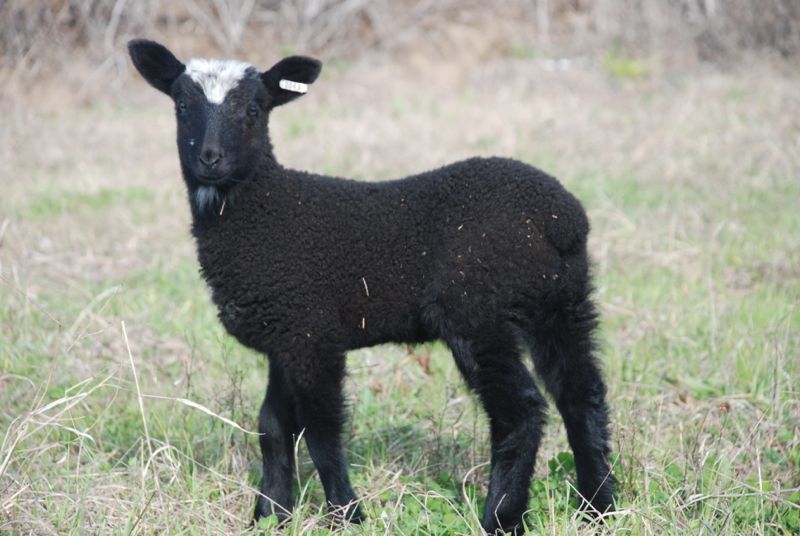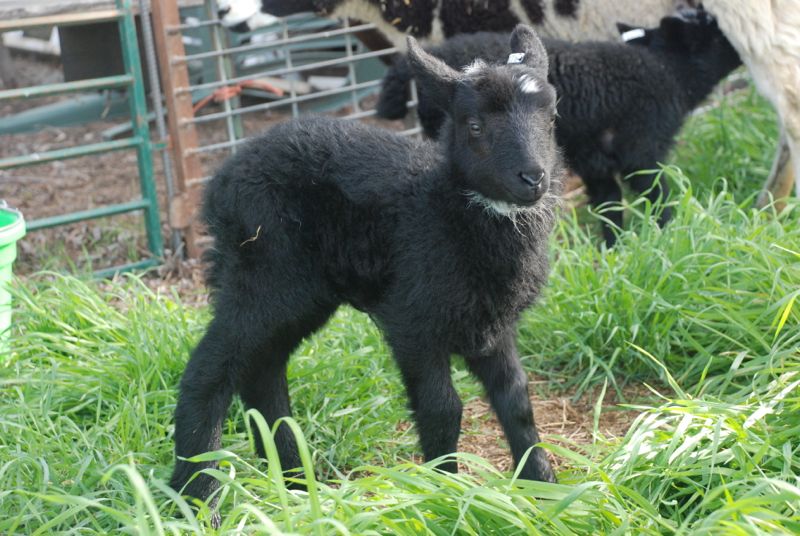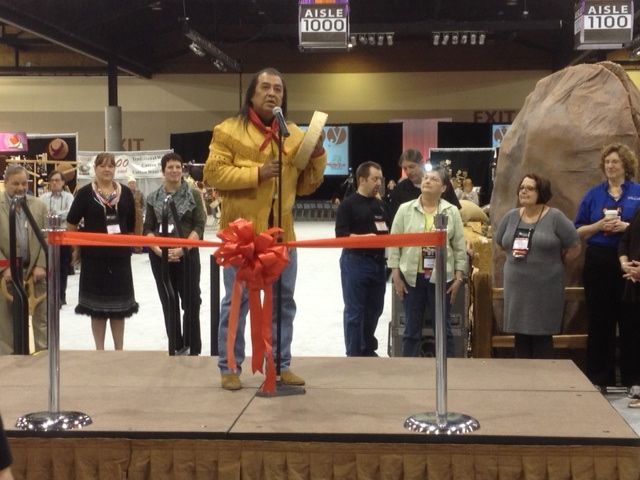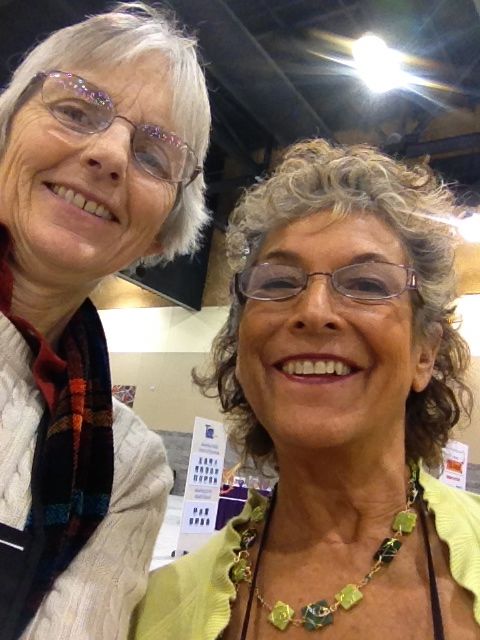Higby's Country Feed is my favorite store. There is always something there I want to buy. I told them that if they started carrying underwear, then between Higby's and Ace Hardware, I wouldn't have to shop anywhere else. Today Higby's had an anniversary celebration of opening the new expanded store five years ago.

With the weather forecast of 104 degrees and north wind today I scoped out the most protected spot for the canopy and sheep pen. The winds didn't materialize, but it was breezy enough to help with the heat. Thanks to Jackie who met me there and stuck it out for most of the day. We were well fed as Higby's provided home-made scones and cinnamon rolls for breakfast, enchiladas for lunch and snacks and cold drinks all day.

I was impressed with the raised beds for the vegetable garden. (Since our tractor tires just shredded maybe I'll be able to use this idea too.)
This morning I caught a couple of lambs that I think I'll be keeping.I figured that I may as well bring sheep that I want to halter break. At the time I wasn't thinking of a blog post so I didn't take many photos. But here is one lamb that I brought:

She is the biggest lamb I have and she has a beautiful fleece. Does she look familiar?
Here is Dad:

By the way, he was sheared last week. The flock is shorn in November but some of the long-wool breeds can benefit from twice/year shearing. Faulkner's fleece looked so lovely that I decided to have him shorn since a sheep shearer was in the area to buy lambs anyway.

Penny, the shearer, chose to shear Faulkner standing up. He was a perfect gentleman about the whole thing.

Penny's son helped catch the locks as they came off. Ummm...don't look too closely at Faulkner. Maybe he could benefit from wearing a sheep size grazing muzzle.

Here is a photo that I took after washing half of Faulkner's fleece.

This is the site that greeted me inside the door of the shop this morning.
It's 7:30 p.m. and I think it's probably still in the 90's. I'm sitting under the ceiling fan I hope that in another hour it will be cooler outside than inside so we can turn on the whole-house fan. How many people go to Hawaii to find cooler temps? (For those of you who think, "wow, that's a random thought", stay tuned. Or maybe it's just heat stroke.)
 Most of the fleeces that are left will be sorted into white, black, and gray. That's what those barrels in the background are for. However, I'm keeping my eyes open for a couple of fleeces for some special projects that I have in mind. The wool on the table is Donna's fleece.
Most of the fleeces that are left will be sorted into white, black, and gray. That's what those barrels in the background are for. However, I'm keeping my eyes open for a couple of fleeces for some special projects that I have in mind. The wool on the table is Donna's fleece.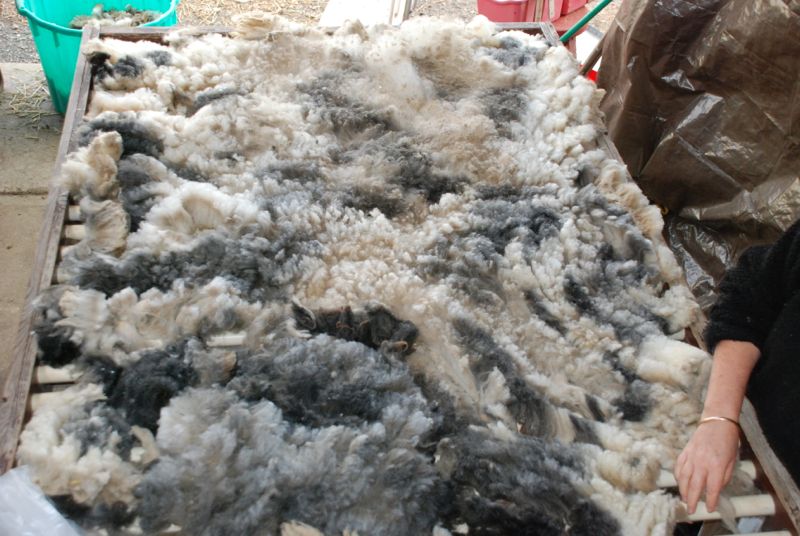 This is what Donna's fleece looks like from the cut side. Isn't that a beautiful shade of gray?
This is what Donna's fleece looks like from the cut side. Isn't that a beautiful shade of gray?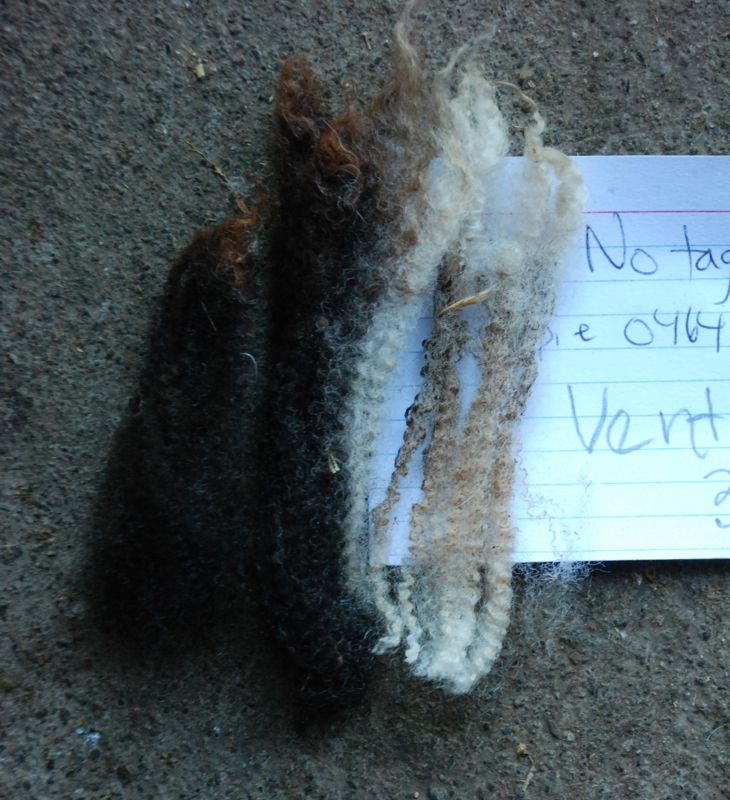 Here is a sample of Ventura's fleece. This is another that I may spin myself.
Here is a sample of Ventura's fleece. This is another that I may spin myself.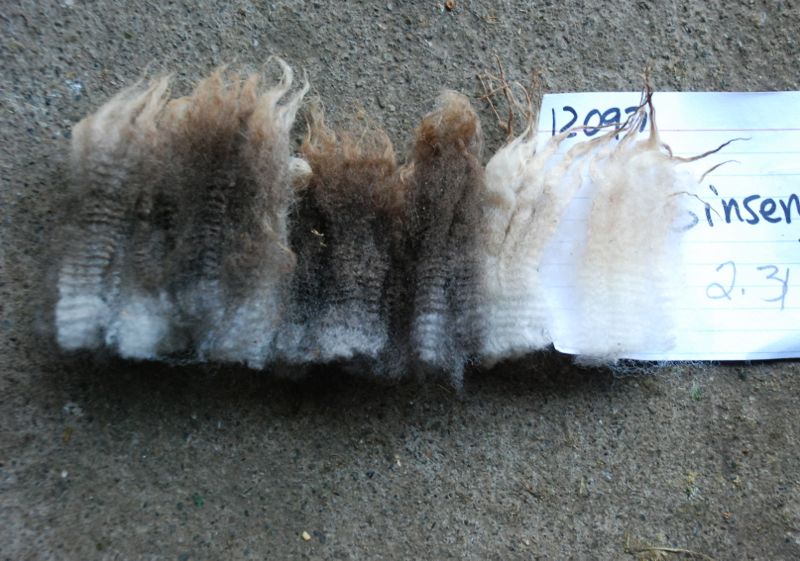 Ginseng is a lilac lamb. Notice the change in color in the length of the staple--lightest color near the skin. It will be interesting to see what this fleece is like next year.
Ginseng is a lilac lamb. Notice the change in color in the length of the staple--lightest color near the skin. It will be interesting to see what this fleece is like next year. This is Ginseng and her spots don't appear light.
This is Ginseng and her spots don't appear light.








































